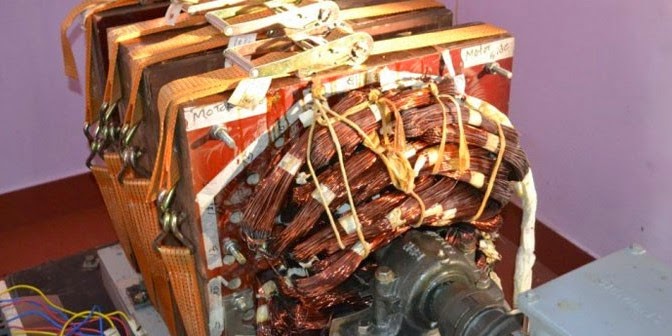INDIA WON’T SUPPRESS TEWARI’S FREE ENERGY GENERATOR.
India considers its own free energy program a matter of national
pride, and is very much willing to risk antagonizing Petrodollar countries with
its support on Reactionless AC Synchronous Generator (RLG) invented by its own
Paramahamsa Tewari, an electrical engineer and former Executive Director of
Nuclear Power Corporation of India.
Years ago, Tewari had also proven the theories inside Bruce de
Palma’s homopolar engine which first exposed this writer to the world of free
energy technologies.
Obviously, a country cannot implement its own free energy
program without considering all possible consequence including a military
response from Petrodollar countries, e.g. Saudi Arabia, UK, US. That’s why
India has been aligning its own military program with that of Russia which at
present is standing up, together with the BRICS countries, against the
Nazionist cabal that is imposing all sorts of sanctions to destroy the
Russians.
The BRICS alliance has in the past promised to release all
suppressed technologies, e.g. free energy, for our responsible utilization. It
looks like they are keeping their word.
“Ere many generations pass; our machinery will be driven by a
power obtainable at any point in the universe.” – Nikola Tesla
In November 2014, I made one of many visits to the laboratory of
Paramahamsa Tewari. I had seen the basis for the RLG design in September of
2010. Mr. Tewari showed me a stiff conductor about a foot long which was
allowed to rotate at the center and connected at each end with small gauge wire.
A magnetic circuit was placed under the conductor. When a current was allowed
to flow through the conductor it rotated, due to a torque induced on the
conductor according to Flemings Left Hand Rule and standard theory, verified by
experiments at the dawn of the electrical age. With a simple rearrangement of
the magnetic circuit, the same current produced no rotation – the torque was
cancelled. I later duplicated the setup and experiment on my workbench. It is
ingenious and lead to his breakthrough, the invention of a reactionless
generator with greatly improved efficiency.
This experiment has lead to the design and testing of generators
with efficiencies far above any previous design. The design uses the same types
of materials used in current generators, but the magnetic circuit within the
machine is configured to cancel back torque while inducing current and
producing power. This might be compared to the rearrangement of materials by
the Wright Brothers to build a surface with lift that resulted in manned flight
in a time when many, including scientists, said it was impossible. Indeed,
physicists who cling to an outdated model of the properties and structure of
space have declared what has been done by Tewari to be impossible.
During the November testing I witnessed two tests of efficiency
on the new model in Tewari’s lab. The second test was several percent better
than the first and produced 6.6 KVA with an efficiency of 238%. A second set of
stator coils was not connected yet but is expected to increase output to 300%.
This is a 3 phase, 248 volt Hz, AC synchronous generator operating at 50 Hz.
State of the art, true RMS meters on the input and output that measured KW,
KVA, and power factor confirmed the readings of meters we had supplied for
tests I observed in April of 2014.
We were able to visit a 130-acre factory site of one of the top
electrical machinery manufacturing companies in India. At this site the company
manufactures rotating electrical machines, including generators. When the chief
electrical engineer first saw the drawings and design of the RLG he knew
immediately what it meant for efficiency! Because of their confidence in the
design, and the results of the tests on the smaller model, the company has
assembled a self-excited machine designed to produce 20 KVA.
When we arrived at the factory a vice president of the company,
the factory general manager, and the chief engineer greeted us. We then
inspected the new machine and met the engineering design team assigned to this
project. They are electrical and mechanical engineers who design and build
conventional generators with output as high as 500 KVA. They are very
enthusiastic and understand the breakthrough. A second machine rated at 25 KVA
is now under construction at this company in India.
I believe, as do the engineers in
India, that this is the biggest breakthrough in rotating electrical machine
design since Faraday’s invention of the electrical motor in 1832. The
elimination of back torque allows all the energy generated to pass through the
machine. Power output is determined by the strength of the excitation magnets
and the synchronous reactance (resistance at 50/60 Hz) of the stator windings.
Current models can be cascaded for higher output. Each machine can produce at
least 2.38 times the input and can be configured in a self-running mode. Due to
concentration on efficiency and design improvements the machine has not yet
been configured in this manner.
During a visit to witness tests in December of 2012, we were
guests of the engineering director of a large utility company, and we toured a
generation facility which the director pointed out was ready for RLG systems as
soon as they are scaled to the required size. In March 2015 we returned to
India for licensing discussions. Current plans call for introductory models to
be marketed at 10 KVA and 25 KVA. A second company is involved in manufacturing
discussions and the Karnataka Power Corporation, which supplies Bangalore, is
investigating the use of 200 KVA units in a wind farm application as described
in the April 7th edition of Asia Times.
Mr.Paramhansa Tewari
The November 2013 issue of The Atlantic magazine features an
article on The 50 Greatest Breakthroughs Since the Wheel. The RLG is more than
just a product or a technical innovation. It is a fundamental change in the way
that energy can be generated. It overcomes the inherent inefficiencies of AC
generators. Patents have been filed and the RLG is ready to be licensed to
companies that manufacture rotating electrical machinery. In fact, discussions
with companies on three continents are underway.
We believe that the RLG is a fundamental discovery, not an
innovation. Mankind’s first fundamental discovery was harnessing and
controlling fire. The second was the wheel. The third was harnessing and
controlling electricity. The fourth was harnessing and controlling the atom.
The RLG can turn wheels without the use of fire (fossil fuels) or the atom
(nuclear plants). It is a 21st century innovation. The first four of these
innovations involved an understanding of material elements. The RLG is based on
an understanding of the non-material properties of space. Paramahamsa Tewari’s
search for the nature of reality has led him from study of the ancient Vedas of
India to the formulation of Space Vortex Theory. It is a new theory unifying
the relationship between space, mass, inertia, light, and gravity. Starting
with principles described in the Vedic texts, Tewari was able to delineate a
mathematical model that explains the words of Tesla when he said:
“All perceptible matter comes from a primary substance, or tenuity
beyond conception, filling all space, the akasha or luminiferous ether, which
is acted upon by the life giving Prana or creative force, calling into
existence, in never ending cycles all things and phenomena.” – Nikola Tesla,“Man’s Greatest Achievement,” 1907
In Tewari’s words:
“The universal matter is created out of prana since prana is
aakaash in motion, and aakaash is the primordial superfluid substratum of the
universe.”
The concept that efficiencies cannot be greater than 100% is due
to an incomplete understanding of the properties of space. The second law of
thermodynamics must be modified to account for the fact that space is not
empty, as has been taught for the last 150 years. The RLG operates at what has
been called “over unity.” Many experienced electrical engineers engaged in the
manufacture of AC generators have independently tested the RLG and confirmed
the efficiency ratings that I have observed. It’s time for the physicists to
get out of the way and modify their theories while the engineers go about the
business of design and production.
The theory and mathematical models can be found at:
Recent Press Coverage:






Ahh yes, perpetual motion. 20th century snake oil.
ReplyDeleteGood you don't agree,this article was not for you alone. People come around only after success of a theory or concept which they were mocking because some university or physics professor convinced them to do it.
DeleteA simple example of Free Energy. A train is travelling at 20 m/s you chock a stone at 3.0 m/s the stone weighs two kilos. Half the mass times velocity squared. At rest in the train, stone has 0.5*2*20*20 = 400 Joules relative to the track, but zero joules relative to the train. at 3.0 m/s, an extra 9 Joules input, and another 9 Joules reaction force on the train. Total input 18 Joules. but the stone relative to the track is going 23 m/s 0.5*2*23*23 = 529 Joules. Returning to the 400 Joules "Status Quo" is 529 - 400 = 129 Joules. Only 18 joules have been expended, leaving an Energy Profit of 111 Joules. A good job we did not choose a stone weighing 12 Kilos, or the Energy Profit would be "The Work of The Devil" 666 Joules!
DeleteIts so nice to see contribution of Indians for science. Can we expect a Nobel prize for this?
DeletePerpetual mobile i possible , look at Leonardo Da'Vinci overbalanced wheel .
Deletehttps://www.youtube.com/watch?v=287qd4uI7-E
Go to about 4 min on this video .